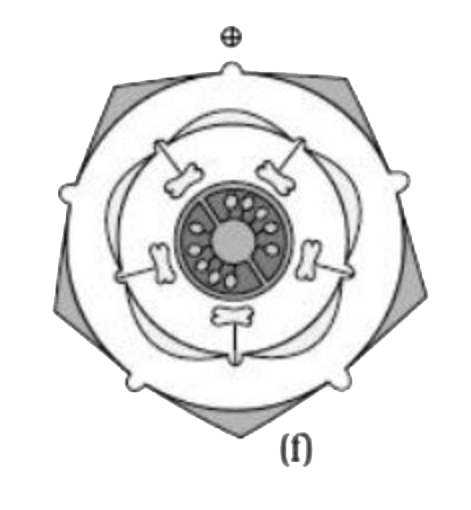Which is false for Vexillary or papilionaceous aestivation ?
Two smallest anterior petals are known as keel.
Two lateral petals are known as wing .
The largest standard petal is posterior.
The largest standard petal is anterior and overlaps wing
The correct Answer is:D
To solve the question regarding which statement is false for Vexillary or papilionaceous aestivation, we will analyze each statement related to this type of floral arrangement.
1. Understanding Aestivation:
- Aestivation refers to the arrangement of petals and sepals in a flower before it opens. It is crucial to understand this concept to evaluate the statements provided.
2. Defining Vexillary Aestivation:
- Vexillary or papilionaceous aestivation is characterized by one large upper petal (the standard) that folds over and covers the two smaller lateral petals (the wings) and the two petals that form the keel.
3. Analyzing Each Statement:
- Statement 1: "Two smallest anterior petals are known as keel."
- This statement is false. The keel refers to the two petals that are fused together and are typically positioned at the bottom of the flower, not the anterior petals.
- Statement 2: "Two lateral petals are known as wings."
- This statement is true. The lateral petals in vexillary aestivation are indeed referred to as wings.
- Statement 3: "The largest petal is known as posterior."
- This statement is true. The largest petal, known as the standard, is located at the back (posterior) of the flower.
- Statement 4: "The largest standard petal is anterior."
- This statement is false. The largest petal (standard) is posterior, not anterior, and it overlaps the wings and keel.
4. Identifying the False Statement:
- After analyzing all statements, we find that the first statement about the two smallest anterior petals being known as the keel is false. Additionally, the last statement regarding the largest standard petal being anterior is also false. However, since the question asks for a single false statement, we can conclude that the first statement is the primary focus.
Final Answer:
The false statement for Vexillary or papilionaceous aestivation is: "Two smallest anterior petals are known as keel."
---
- Aestivation refers to the arrangement of petals and sepals in a flower before it opens. It is crucial to understand this concept to evaluate the statements provided.
- Vexillary or papilionaceous aestivation is characterized by one large upper petal (the standard) that folds over and covers the two smaller lateral petals (the wings) and the two petals that form the keel.
- Statement 1: "Two smallest anterior petals are known as keel."
- This statement is false. The keel refers to the two petals that are fused together and are typically positioned at the bottom of the flower, not the anterior petals.
- Statement 2: "Two lateral petals are known as wings."
- This statement is true. The lateral petals in vexillary aestivation are indeed referred to as wings.
- This statement is true. The largest petal, known as the standard, is located at the back (posterior) of the flower.
- This statement is false. The largest petal (standard) is posterior, not anterior, and it overlaps the wings and keel.
- After analyzing all statements, we find that the first statement about the two smallest anterior petals being known as the keel is false. Additionally, the last statement regarding the largest standard petal being anterior is also false. However, since the question asks for a single false statement, we can conclude that the first statement is the primary focus.
The false statement for Vexillary or papilionaceous aestivation is: "Two smallest anterior petals are known as keel."
Similar Questions
Select the incorrect statement for vexillary or papilionaceous aestivation ?
View SolutionDefine the aestivation
View SolutionWhich of the following animals undergo aestivation ?
View SolutionThe mode of arrangement of sepals or petals in a floral bud is known as aestivation . Draw the various types of aestivation possible for a typical pentamerous flower.
View SolutionWhich of the following plants has the floral characters like zygomorphic flower, vexillary aestivation, diadelphous androecium and marginal placentation.
View SolutionTwo important papilionaceous timer woods are
View SolutionWhich of the following correctly depicts the aestivation of petals in the flower of cotton ?
View SolutionPapilionaceous corolla occurs in
View SolutionThe plant which have this floral diagram possesses
A. Papilionaceous corolla
B. Swollen placenta
C. Epipetalous
D. Epiphyllous condition

View SolutionDefine the following terms
aestivation
View Solution
